04:35
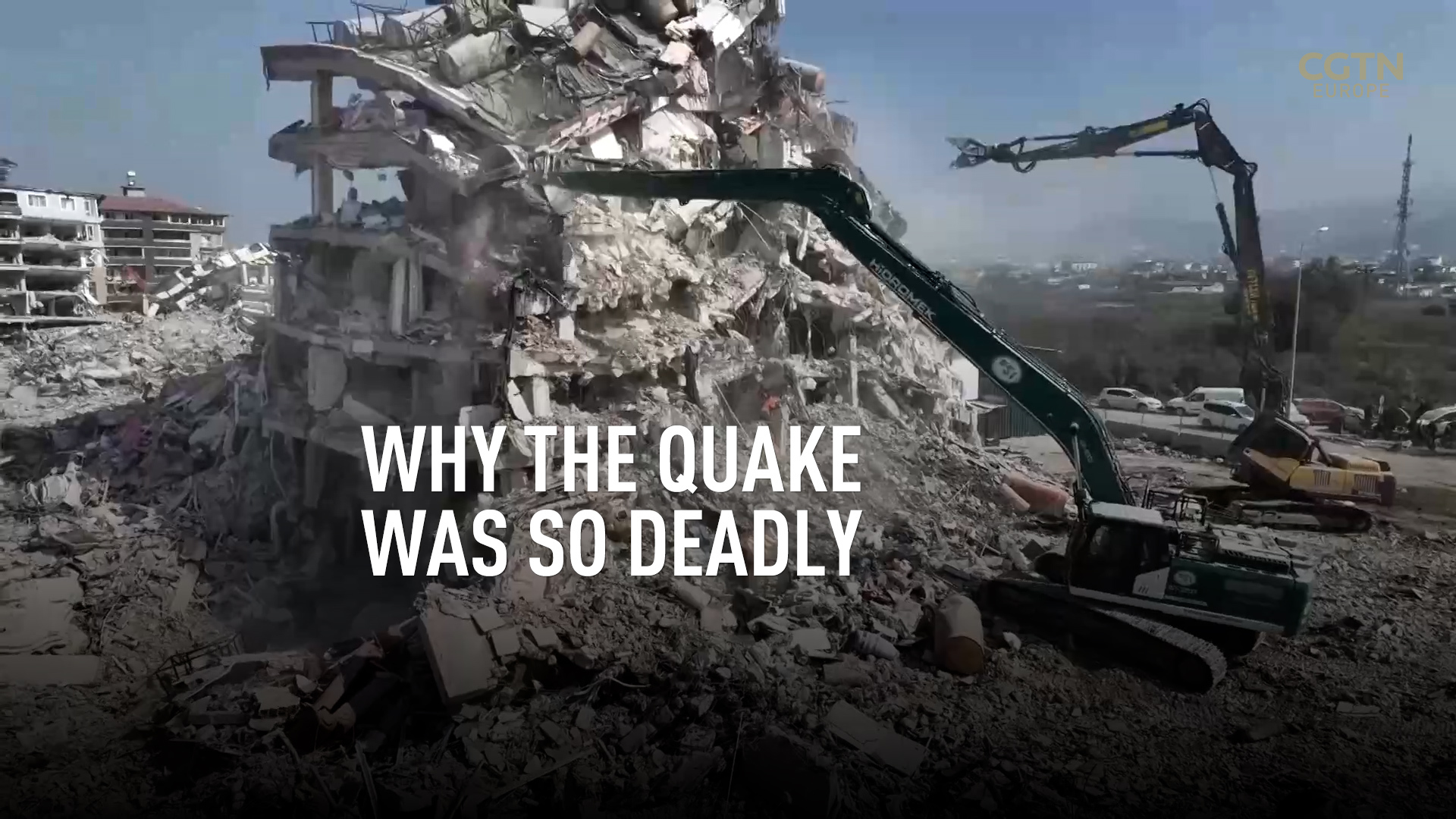
As the focus of relief efforts for the huge earthquake in Türkiye and Syria changes from search and rescue to humanitarian aid, questions are being asked about why the quake caused such destruction.
CGTN Europe spoke to several experts to help answer the biggest questions arising from this tragic disaster.
How do earthquakes happen?
Earthquakes happen all the time, on land and in the ocean – but the majority are so small that people do not even feel them.
"The surface of the earth is made of tectonic plates, which are about 100 kilometers thick, they move around together. So when they collide or move apart, they form earthquakes as the pressure gathers," explains seismologist Carlo Doglioni, President of Italy's National Institute of Geophysics and Volcanology.
But this process does not always happen easily as the plates are stiff, rough, and under a lot of pressure from surrounding plates.
The tectonic plates tend to pull at or push on each other on either side of a fault for long periods of time without moving much at all, which builds up a lot of stress in the plates.
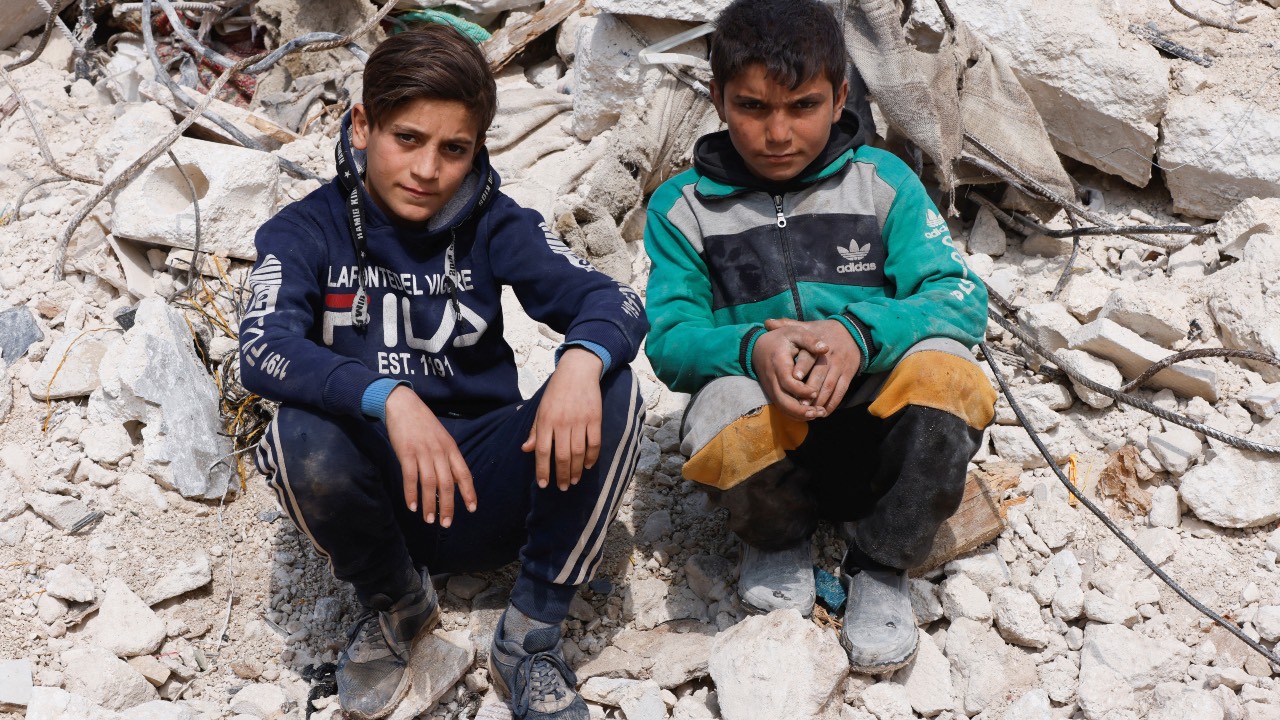
Children sit on rubble, in the aftermath of the earthquake, in the rebel-held town of Harem, in Idlib governorate, Syria. /Emilie Madi/Reuters
Children sit on rubble, in the aftermath of the earthquake, in the rebel-held town of Harem, in Idlib governorate, Syria. /Emilie Madi/Reuters
Where do most earthquakes occur?
The Ring of Fire is a significant geological feature that surrounds the Pacific Ocean basin and is the primary zone of the world's earthquakes.
It hosts a series of volcanic and seismic hotspots that run along the rim of the ocean, including Japan, Indonesia, the Philippines and the Americas.
READ MORE
UN appeals for $1 billion to help 5 million people in Türkiye
Hopes to find quake survivors dying
Poll: U.S. should lift Syria sanctions for disaster
An estimated 90 percent of earthquakes take place within its boundaries. And it hosts a large number of active volcanoes, with approximately 75 percent of the world's active volcanic sites located along its path.
After the Ring of Fire, the Alpide belt is the second most seismically active region in the world. It runs over 15,000 kilometers, extending from the Mediterranean region eastward through Türkiye, Iran, and northern India.
01:25
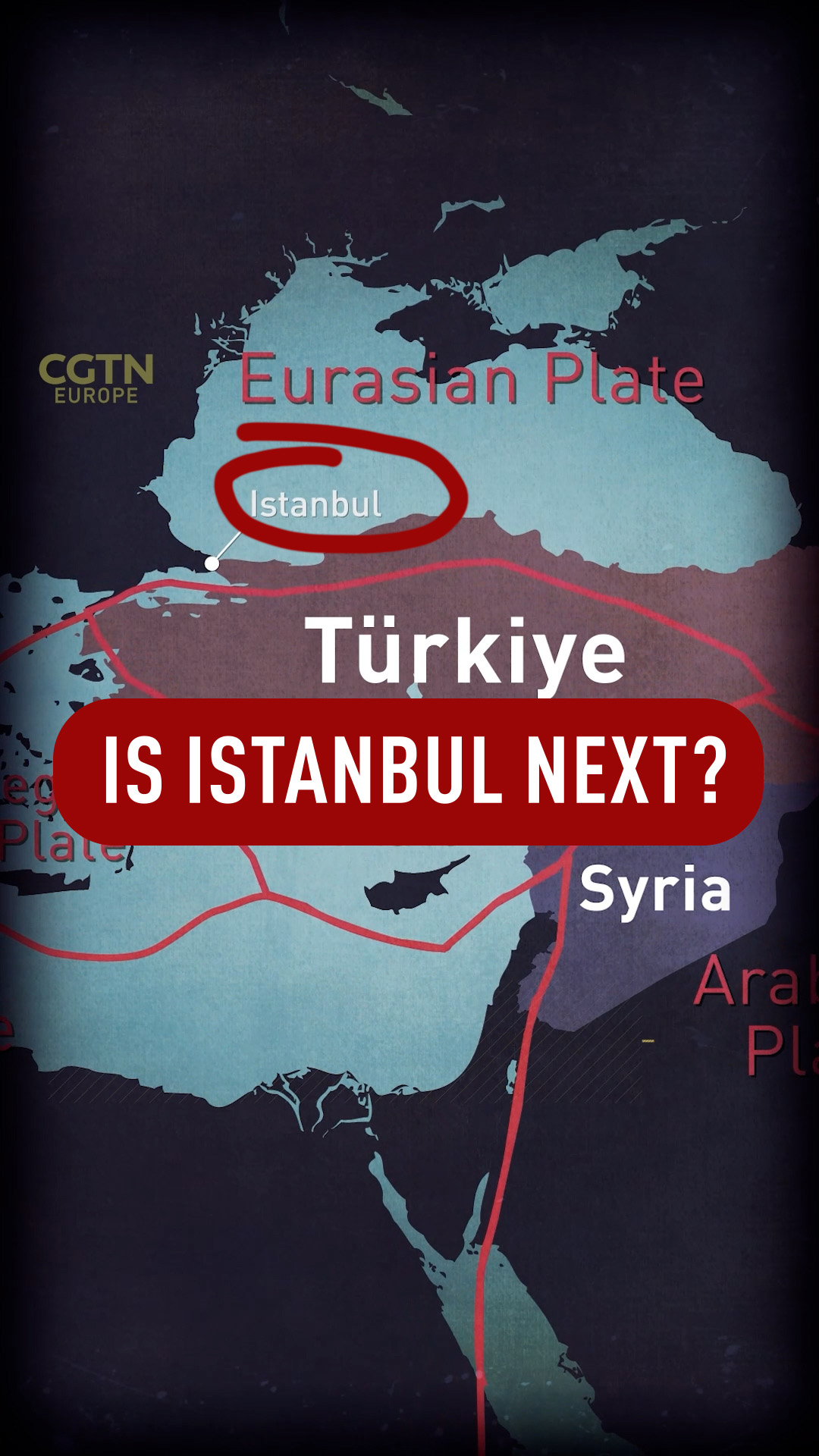
Doglioni says that most of the earthquakes form in the most superficial 20 kilometers as it is the coldest part of the earth hence the crust in that part is brittle "but most of the seismicity of the earth is concentrated in the first 15, 20 kilometers, that is the location where more energy is required to break the rocks."
What happened in Türkiye and Syria?
Doglioni explains that all of Türkiye is cross-cut by faults – but that there is faster motion and a larger accumulation of energy along the North Anatolia and the East Anatolia faults.
"In this specific case, the Anatolia plate is moving relatively southwest every day, but when it came in contact with the Arabia plate, the two plates were stuck together so they couldn't move," he says.
"During the [last few] decades, the energy accumulated in that area because the relative motion between the Anatolia and the Arabia plates was locked. So when the volume of energy accumulated was too big to be supported by the earth crust, suddenly all that energy accumulated over the centuries was released in about one minute during the first earthquake."
It is estimated that the Anatolia fault moves two centimeters each year, leading to a cumulative shift of two meters every 100 years. Doglioni says that over the years, it has moved between six and seven meters.
Suddenly all that energy accumulated over the centuries was released… in about one minute during the first earthquake.
- Carlo Doglioni, seismologist
"The longer the faults, the larger is the displacement associated with the fault during the earthquake," says the seismologist. "In this case, the first earthquake moved in that specific area, shifted and slipped apart five to eight meters. And the second fault as well had seven to eight meters of displacement, but that's only in that specific area, not in the entire Anatolia."
Why have these earthquakes been so devastating?
There is a relatively stronger velocity contrast between Anatolia and Arabia, says Doglioni, so the seismic hazard is natural. He says there are 10 to 15 earthquakes of magnitude 7 to 7.9 every year on the surface of the earth.
"There is nothing new about those earthquakes… but increasing population and increasing number of buildings are a factor and the devastation is related to the quality of construction," he adds.
Architect Tolga Ozden, who specializes in disaster risk, climate change and resilience, shares Doglioni's view that the poor quality of construction was indeed a factor.
He also notes that the focal point of the earthquakes was very close to the surface and the fault lines are also very long.
"The first earthquake's fault line was about 200 kilometers long and the second was 150 kilometers long – so a total of 350 kilometers of surface ruptured," says Ozden.
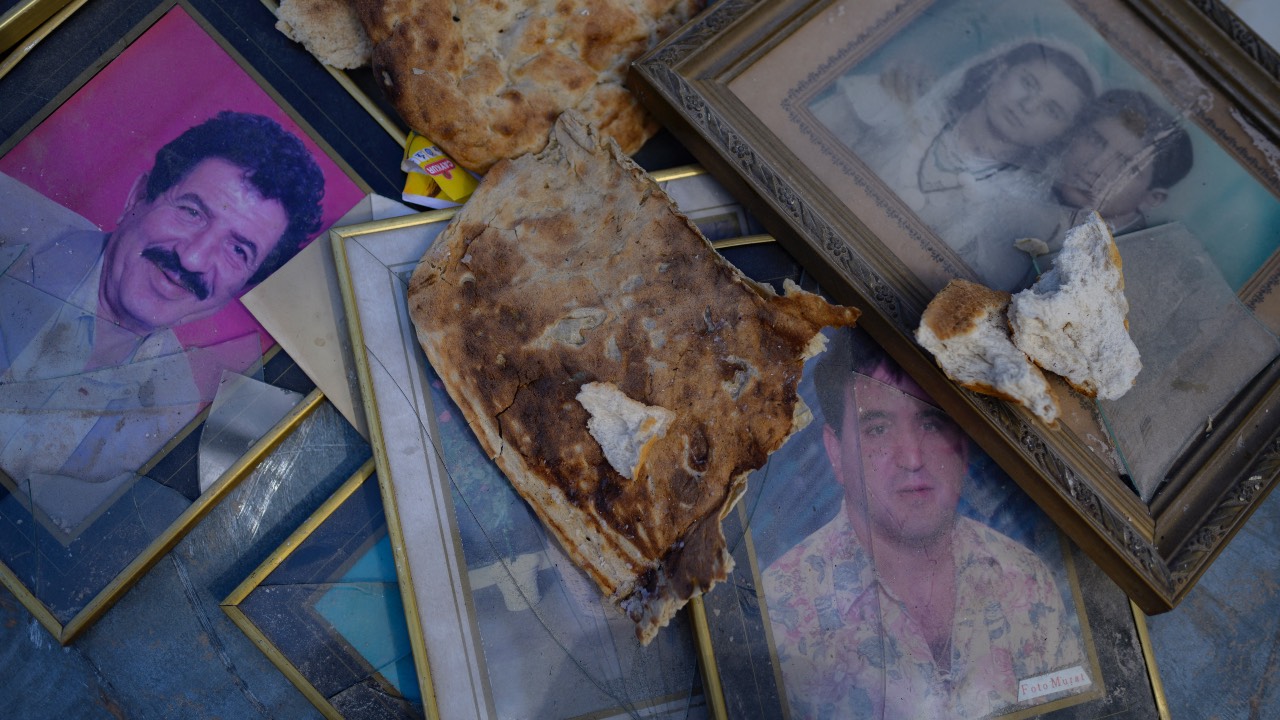
Family pictures are seen in the rubble of a collapsed building in Antakya, south of Hatay. /Yasin Akgul/AFP
Family pictures are seen in the rubble of a collapsed building in Antakya, south of Hatay. /Yasin Akgul/AFP
He says the first estimate of the total number of destroyed buildings is around 15,000, which means nearly 500,000 people would have ended up under the rubble – an estimate that has been shared by other experts as well but could not be independently verified.
"And 99 percent of the collapsed buildings are concrete buildings, so it is very difficult to save people from those destroyed buildings as the materials are very heavy," he adds.
Ozden says the buildings had not been constructed according to the laws and regulations of the country's earthquake-resistant construction system. They should have been built with high-quality concrete and reinforced with steel bars. And for the structure to be earthquake resistant, columns and beams must be distributed to effectively absorb the impact when the ground shakes.
"They are very weak structures. And the initial reports from the site show that most of the buildings could not withstand even the first few seconds of the earthquake. They very suddenly collapsed."
01:20
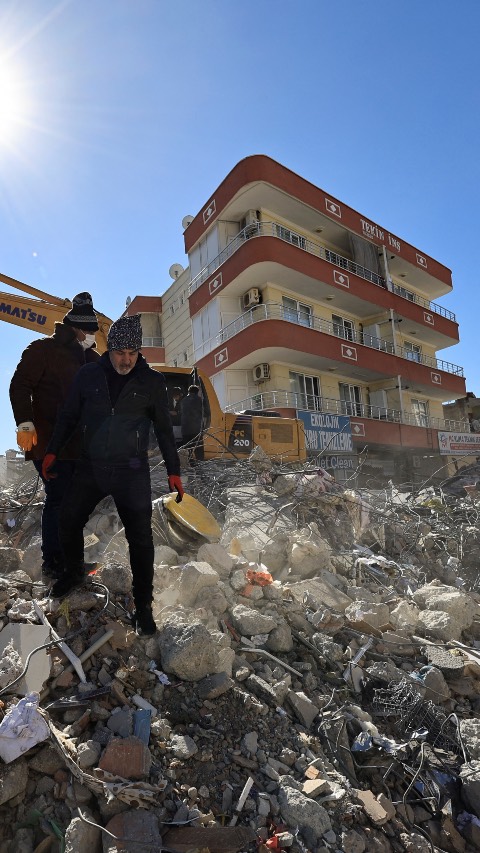
Ozden says that following the 1999 earthquake in Istanbul's Marmara region, which killed more than 17,000, Türkiye's building regulations were updated and a new inspection model was introduced in 2001.
Therefore all the buildings constructed in the last two decades should have complied with the new laws and regulations "but the information from the site shows that even the new buildings which were constructed a few months ago also collapsed. This is very strange."
Ozden says it is important to hold the contractors and the inspectors accountable for not following and enforcing the regulations.
"We have to find out what happened to the buildings, why they collapsed, who is responsible for these huge casualties?"
Unfortunately, the Turkish government has been giving 'construction amnesties', which are in effect legal exemptions in lieu of a fee, for structures built that do not meet the required safety standards, passed since the 1960s and updated in 2018.
Turkish President Recep Tayyip Erdogan's videos in which he spoke about helping developers to evade construction codes have resurfaced in recent days.
We have to find out what happened to the buildings, why they collapsed, who is responsible for these huge casualties?
- Tolga Ozden, Architect
Ozden points out the quality of soil on which some of the buildings were constructed is also a factor.
"In the disaster area, the soil structure in some parts is very weak, which can make the effect of the earthquake worse," he argues.
This is why authorities must not sanction construction projects on such sites, especially not on agricultural land.
"In Antakya city in Hatay region, there was a lake so the water level was very high, yet most of the buildings were constructed on that soil and the huge collapse of the buildings happened in that area," Ozden explains.

A man walks on rubble in Antakya, Türkiye. /Nir Elias/Reuters
A man walks on rubble in Antakya, Türkiye. /Nir Elias/Reuters
In some instances, design faults most likely led to the buildings not being safe and earthquake resistant. In a lot of residential blocks, there are usually shops and retail units on the ground floor so columns are often removed leaving them without the extra support required for the structure, to make the shopping areas open and inviting for the customers.
"They change the plans and the structure so this should be inspected very well," warns Ozden.
Turkish officials say 113 arrest warrants have been issued in relation to the construction of buildings that collapsed in the earthquakes. At least 12 people, including building contractors, have already been taken into police custody.
What challenges have the rescue teams faced?
Recuse operations in Türkiye are still ongoing even after almost two weeks since the two earthquakes hit the region. But time is now running out and it is becoming increasingly unlikely that many more people will be pulled out alive.
The area affected is spread across 10 cities and given the sub-zero winter temperatures, it has been challenging to carry out search and rescue operations.
01:00
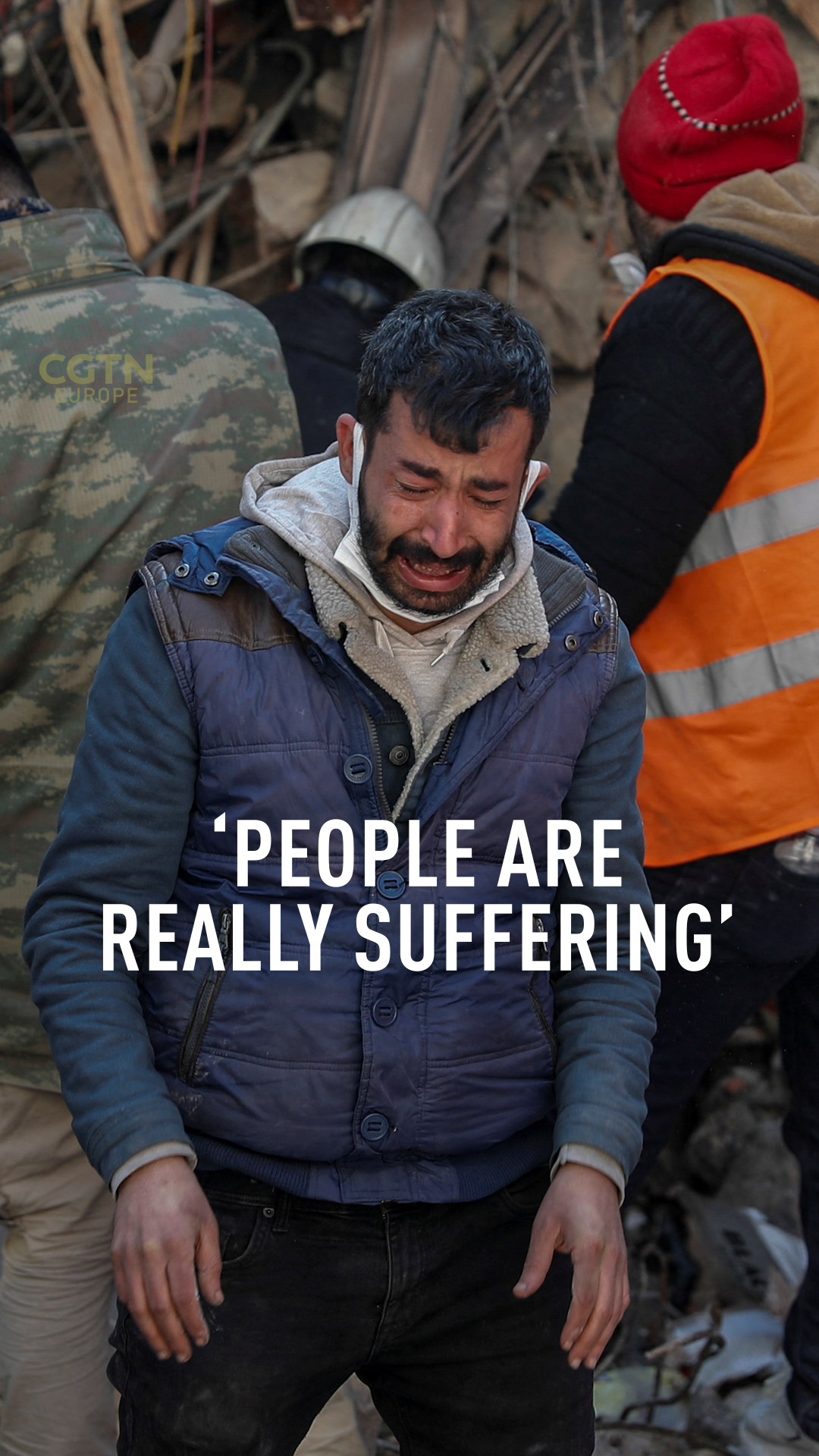
"It is a huge earthquake and it is very tiring. And one of the challenging points for the earthquake is the weather," says Durmus Aydın, Secretary General of the Türkiye-based IHH, a humanitarian relief organization.
"Still, there are people who are under the rubble and alive. So the search and rescue teams are trying to find those people alive. We never lose hope because we have seen many miracles from our past experiences."
IHH deployed 1,476 search and rescue personnel, including in northwest Syria, where Aydin says "people are really suffering."
They have been focusing on delivering tents, blankets, daily food items and hygiene kits, to those affected in Syria, but it has presented its own challenges due to the ongoing conflict there.
It is a huge earthquake and it is very tiring.
- Durmus Aydın, Secretary General of the Türkiye-based IHH
Aydin said they have been urging the UN and other humanitarian organizations to put pressure on the Syrian government to open more routes into the affected part of the country to facilitate passage of aid convoys.
What lies ahead?
Both Aydin and Ozden pointed out the urgent need for social and psychological support for the survivors.
Ozden says moving them to temporary accommodation and providing them with food is not enough because "they lost many things. They have big traumas. So we have to support them through these traumas."
The United Nations has also appealed for more than $1 billion to help more than 5 million people in Türkiye over the next three months.
UN aid chief Martin Griffiths, who visited Türkiye last week, said the people have "experienced unspeakable heartache," adding: "We must stand with them in their darkest hour and ensure they receive the support they need."
Meanwhile, Ozden is concerned about the impact on the mental health of "the hundreds of thousands of people who will be living in tents and prefabricated units for years."
Ozden also warned that they "are waiting for a big earthquake in the Istanbul region, which has a population of nearly 15 million. So we are now more afraid of the results because Istanbul is a very problematic city as it has an estimated 50,000 brick structures, putting two to three million people at risk in Istanbul.
"We have to find a solution as soon as possible."
Subscribe to Storyboard: A weekly newsletter bringing you the best of CGTN every Friday